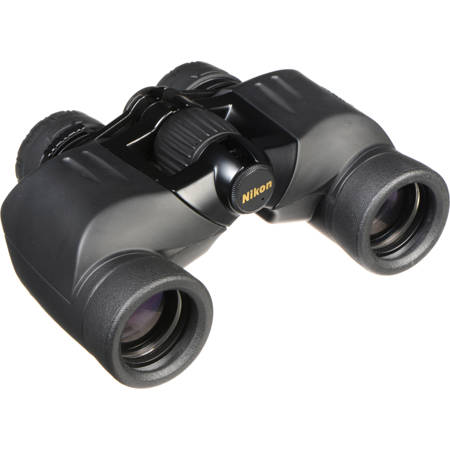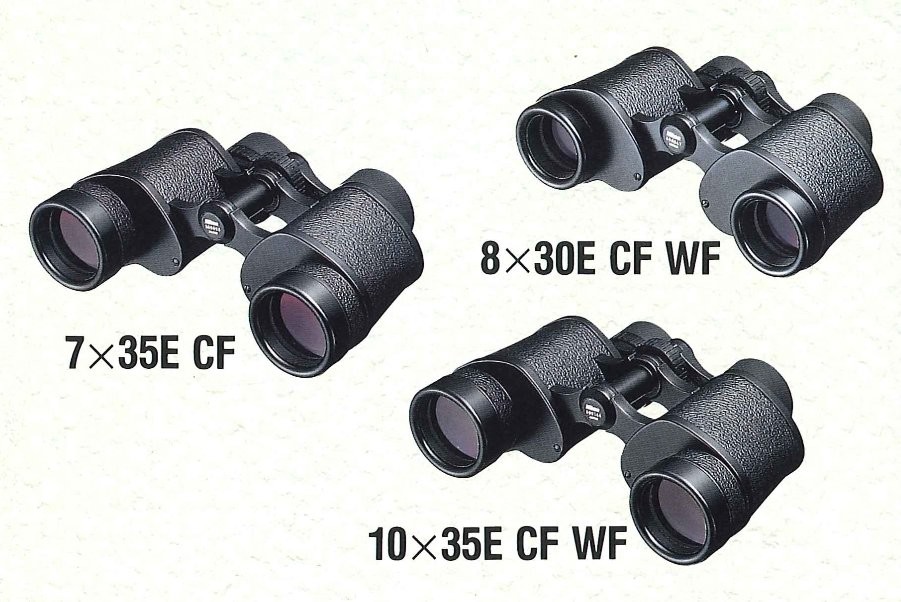Nikon binoculars have established a benchmark for extraordinary value by which all others are compared. Building on Nikon's eminence as the global leader in precision optics,. we provide binoculars for virtually any application, making it easy to find brilliant, impeccable optics for your own specific needs. The magnification number on binoculars is expressed as part of a combination of two figures, for example 8x40 or 10x25. The first figure (8x, 10x) refers to the power of magnification. Binoculars with an 8x magnification will make objects appear 8 times closer than they are. The higher the number, the closer objects will appear through the lenses. New Nikon cameras are accompanied by a warranty card. Check carefully for any errors in spelling and that the serial number featured matches the serial number found on the camera and retail box label. Summary: To be honest, these came today as part of an Auction lot. £3.00 GBpounds was for the entire lot! As others have said, the case stitching requires repair, the pair I have show plenty of use, indicating good quality, Made in Germany and a seven digit number, seems to bode well.
Products & Solutions
Nikon's challenge
As long as curiosity exists in the world, we will keep seeking out new challenges, endlessly. Enjoy this short movie portraying the positive spirit of Nikon and people - continuing to take on challenges into the future.
Nikon's challenge
The new full-frame Nikon Z 5 mirrorless camera
The Nikon Z 5 mirrorless camera is tough, light, easy to handle, and compatible with a wide array of full-frame lenses. Achieve thrilling new levels of image quality, whether you're creating stills or movies.
Designer's Voice Vol. 2
Read about a young product designer's passion for design, and what led to his decision to aspire to product designing.
Investor Relations
Second Quarter of the Year Ending March 2021 financial results have been announced.
Sustainability Report 2020

Nikon Sustainability Report 2020 (in English) Completed.
Nikon and society
A movie introducing Nikon's businesses, contributing to various fields through a wide range of technologies, products and solutions to realize a more affluent society.
Nikon and society
Research
'Nikon Research Report Vol.2 2020' has been added, highlighting advanced technical capabilities and corporate value based on Nikon's opto-electronics and precision technologies.
Latest News
- Dec. 9, 2020Selected for the highest rank, “A List”, by the CDP's climate change questionnaire for the second consecutive year
- Nov. 26, 2020Selected for Global ESG Index, Dow Jones Sustainability Indices “DJSI World” and “DJSI Asia Pacific” for the third consecutive year
- Nov. 26, 2020The Full Panel of Judges for the Nikon Photo Contest 2020-2021 Has Been Determined
- Nov. 12, 2020Nikon introduces the CNC Video Measuring System “NEXIV VMZ-S3020”
- Nov. 10, 2020Nikon introduces the LASER 50 and LASER 30 Laser Rangefinders
Nikon Lens Serial Number Lookup
Before buying a pair of binoculars for hunting or birding or for astronomy, it is crucial to understand what do the numbers on binoculars mean. These numbers provide you with a wide range of information about the binoculars, all of which will help you to buy a pair that is right for you. Let's look at these numbers in more detail.
1. What do the Magnification Numbers on Binoculars Mean?
The magnification number on binoculars is expressed as part of a combination of two figures, for example 8x40 or 10x25.
The first figure (8x, 10x) refers to the power of magnification. Binoculars with an 8x magnification will make objects appear 8 times closer than they are. The higher the number, the closer objects will appear through the lenses.

Extreme magnifications (12x and up) make it difficult to maintain a steady image, unless you have the binoculars stabilized on a solid object like a table or a wall. You also get zoom binoculars, which offer an adjustable magnification range.
2. Objective Lens Size (Aperture)
The number following the magnification power is called the objective lens size, also referred to as aperture. This is a critical number, because it indicates how much light the lenses are able to gather. A 10x50 binocular will have a 50mm objective lens size, a 7x35 will have a 35mm objective lens size, etc. Wider lenses usually also increase the size of the binoculars.
The wider the objective lens size, the brighter the image you'll see thanks to more light being gathered through the lens. This number is most important for night sky viewing, or other low light conditions.
Here's a simple question to demonstrate this: which of a 10x25 or a 10x50 binocular will be best for viewing the night sky? The answer is, of course, the 10x50. You'll see many more distant objects in the night sky thanks to the wider aperture.
3. Understanding Angle of View
Angle of view walks hand in hand with field of view as they refer to the same thing: the amount of horizontal scenery that is visible when looking through the binoculars.
We will discuss them separately to avoid confusion, and show you how to convert one to the other if needed.
First, angle of view (AoV):
AoV is always expressed in degrees. The higher the number, the wider the area you'll be able to see. Anything over 6 degrees can be considered a good angle of view.
If you see a really high degree number, like 72 degrees, the manufacturer may be using actual angle of view. This number is reached simply by multiplying the angle of view with the magnification value of the binoculars.
For example: a 10x50 binocular with a 7.2 degree angle of view will have a 72 degree actual angle of view (7.2 x 10 magnification).
4. Understanding Field of View
Field of view (FoV) is not expressed in degrees, but in either:
Again, a higher number simply means you'll have a wider horizontal view through the lenses. Typically you can consider a FoV of about 300 to 375 feet as adequate. Remember though that the higher your magnification, the smaller your field of view will be due to the object being brought closer.

Finally, here's how you convert angle of view to field of view:
Multiply the angle of view by 52.5
So, a 7.2 degree angle of view equals a 378 feet field of view
7.2 x 52.5 = 378
7.2 x 52.5 = 378
5. Eye Relief Number
The eye relief number on binoculars is mostly important only if you wear glasses. It tells you how far away from the eyepiece your eyes can be while still being able to enjoy the full field of view that the binoculars offer.
If you wear glasses, you'd want an eye relief of at least 15mm.
6. Exit Pupil Number
The easiest way to understand this number is to hold a pair of binoculars about 8 inches from your eyes. The two dots you'll see in the center of the eyepieces are where the light from the lenses hits your eyes to allow you to see the image you're focusing on.

These need to be greater than your pupils. The value is easily calculated by dividing the objective lens diameter with the magnification. A 10x50 binocular will have a 5mm exit pupil, while an 8x25 will only have a 3.1mm exit pupil.
Anything larger than a 4mm exit pupil should be fine for most conditions, but bigger is better.
7. Close Focus
Our final entry in this article about what do binocular numbers mean is close focus. This number tells you the minimum distance the binoculars need to focus. For example, a close focus of 13 feet means you can get a perfect focus on an object as close as 13 feet to you.
A Quick Checklist
Now you no longer have to be daunted by the question of what do the numbers mean on binoculars. Let's give you a quick checklist to help you remember the most important points:
- for night sky or low light viewing, a high objective lens diameter is important
- greater magnification means a smaller field of view
- look for an eye relief of more than 15mm if you wear glasses
- an exit pupil of more than 4mm is recommended for night viewing

- pay attention to a short close focus if you want to magnify very close objects
Conclusion
What does the numbers mean on binoculars? You now know the meaning of all the most important ones. Keep this guide handy when you shopping for binoculars to find the one that's right for you.
Get a nice big aperture if you want to see as many stars as possible, and a smaller aperture if lighter weight and portability are important to you. Beware of magnifications higher than 12x if you don't want too shaky an image without support, while also maintaining a decent field of view.
You'll be able to figure out all these considerations for yourself with the help of this guide. Good luck on buying the perfect pair of binoculars for your needs!
Nikon Serial Number Guide
Furthur Reading: How to Choose Your Perfect Binoculars, Binocular Parts & their function